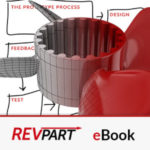Manufacturing shouldn’t be intimidating for a budding startup — but it’s understandable that sometimes, it can be. The mysteries of the unfamiliar processes, terminology and methods that are revealed once you look closer into the “how” of taking your product to market can seem overwhelming. Manufacturing does, like any other aspect of your business plan, demand education and research. Fortunately, by investing the required time to learn some of the biggest pitfalls to avoid, the production step of your product can be solved and perfected, just like other areas like your marketing or distribution plans. You’ve found a good place to start: here are five of the biggest mistakes for a startup to avoid before selecting a manufacturer.
Overlooking quality control and production efficiency
In manufacturing, quality control goes far beyond simply the measure of a product or a piece’s integrity (although that remains an integral part, and a critical concern). A manufacturer’s quality control process — or lack thereof — can give you a glimpse into its entire organizational philosophy. On a more practical level, it can give you a measure of how efficiently a facility runs, and what kind of savings — or costs — might be passed to you.
A comprehensive quality control plan looks at all aspects of the manufacturing process, as well as the manufacturer. The best plans emphasize minimized waste and maximized efficiency, but also cover more intangible factors like employee satisfaction and dedication to the job. An organization with an emphasis on quality control — and on each of these factors, quantifiable or not — is more likely to not only provide you with a better-made product, but one made with better bang for your buck. The manufacturer will probably be someone you feel confident and comfortable working with, as well.
Before moving on, let’s not overlook that product integrity part of quality control. Every factor of the quality control process should be in the interest of producing a high-quality, up-to-spec piece. If quality control is not a high priority at a facility you’re considering, you run the risk of unintentionally putting an unsafe, inferior product into the marketplace. The repercussions of such poor craftsmanship can be difficult, if not impossible, for a business to recover from.

Bypassing supply chain concerns
No manufacturer operates in a vacuum. The path from CAD drawing or other plan, to finished product, takes many steps, often covering some or all of the globe. From raw material sourcing the way through to finishing services, it’s important to understand exactly what happens at each juncture in the process of manufacturing your product. A few questions to consider:
- Where will raw materials be sourced from?
- Are there global economic concerns or seasonal factors that may affect intercontinental surface shipping of materials?
- Are there political or ethical concerns with where or how my raw materials are sourced? Will I have PR problems on account of issues that occur three or four steps downstream in the chain?
- What are the time considerations in the supply chain?
- Overall, is it more efficient to save time and source more locally?
- Does my manufacturer complete finishing services in-house, or is it subcontracted? Will I be aware of, and able to vet, any subcontractors used?
Sometimes, supply chain questions go unanswered simply because they aren’t asked. Other times, a manufacturer may be more obviously unforthcoming, which is your red flag to use caution when working with the company. Understanding that any manufacturer is part of a vast supply chain with many variables to consider is a great start to knowing what questions to ask, and taking steps to avoid any future problems.
Taking a “price-first” approach
Going with the lowest bidder is often an attractive proposition, especially as a startup, when capital is at a premium and production costs seem like the easiest line item to decrease. It’s critical not to overlook the “total cost” of your product, however — going beyond the upfront manufacturing costs.
Ask yourself how a potential manufacturer is able to give you the lowest quote. Is it paying its employees enough to keep them satisfied? Is it sourcing quality materials, using the proper channels? Will it be able to manufacture your product to your exact specifications, without cutting corners in order to meet the price you were quoted? After you ask yourself, if you still have questions, don’t be afraid to ask your potential manufacturer. It should be able to provide a satisfactory answer.
An uncharacteristically low upfront manufacturing quote can be an indicator of problems behind the scenes. If you end up with unusable, poor-quality products thanks to sub-par manufacturing practices, you may end up pouring more and more capital into makegoods, repairs and other fixes than you ever would have by choosing a more reputable manufacturer in the first place. “Total cost” takes a broader view of the expenditures that it will take to bring a high-quality product to market — and it often proves that choosing a manufacturer based on factors like quality, fit and reputation is a better investment than blindly chasing the best price.

Ignoring differences among materials
As a startup proprietor, you may be surprised to find that the manufacturing industry fosters as much innovation as any other burgeoning industry — especially when it comes to driving efficiency through new materials and formulations for products. Far from a static industry dealing in “the same old” materials and processes, manufacturing continues to evolve and adapt — to the benefit of those looking to harness the best of the new technology and developments available to bring new products to market.
Bear in mind that there are also manufacturers that may get stuck in a rut. However, doing things the way they’ve always been done rarely leads to success — in fact, a mindset of bucking trends is likely what led to your startup concept in the first place. Manufacturers who aren’t on the cutting edge of materials and production processes are unlikely to turn into a beneficial partner for your growing business.
Seek manufacturers who are as interested in finding new, better ways of doing things as you are — they are indeed out there.
Forgetting to “Get to know” your manufacturer
All manufacturers are not created equally — in fact, the opposite is true. Even if, on paper, two facilities have the same capabilities, spec sheets and competencies, you’ll very likely have a different experience with each. Every manufacturer has different specialties, sensibilities and approaches — all of which are important factors to consider when choosing a partner to work with.
Too many manufacturers say they can “do it all,” but in reality, no supplier can fulfill that promise. Different manufacturers focus on, and excel at, different things, no matter what they might tell you on their website. An important part of researching and selecting a manufacturing partner is examining its business inside and out — will it understand your product and your goals, is it willing and equipped to work with you to produce the best results in the most efficient way possible?
Each of the potential downfalls discussed above presents an opportunity to get to know a potential manufacturer better, and to determine if it’s the right fit for you. Understanding its values and its specialties, and how it aligns with yours, gives you a strong opportunity to cut through the noise that the landscape of manufacturers can seem to present — and a greater chance for success.



